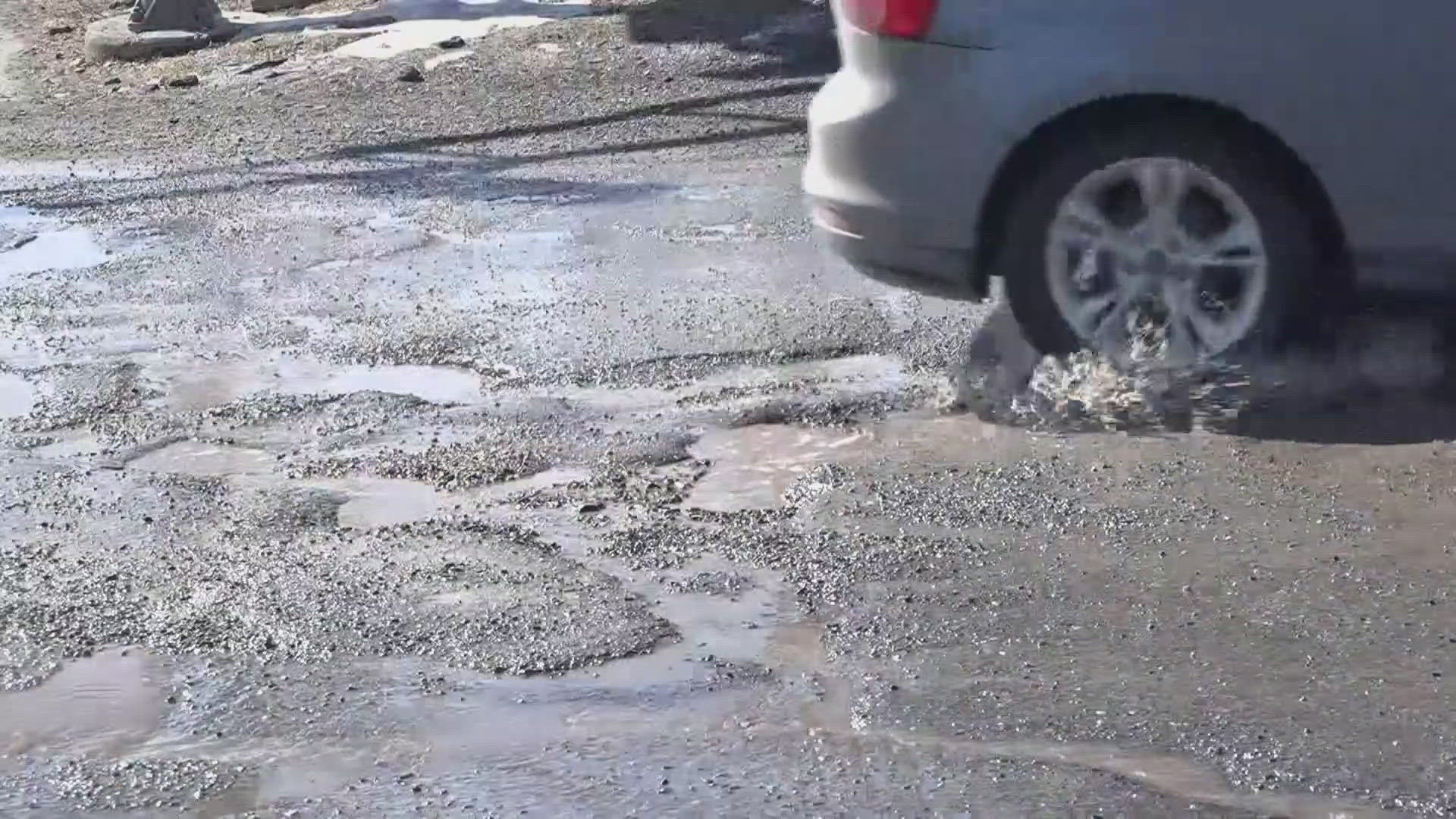ORONO, Maine — Pothole season may be the last thing on your mind as summer winds down, but scientists at the University of Maine are working hard on a new process to stabilize soil under roads and highways and reduce carbon emissions.
Potholes wreak havoc on your tires, alignments, suspension, and shocks. According to AAA, potholes cost drivers a staggering $27 billion annually.
The craters happen when moisture collects in cracked pavement during freezing and thawing temperature cycles, causing cracks to expand and contract over time, and those cracks worsen with the weight of passing cars. But what if soil could be stabilized underneath the asphalt?
That's the idea behind groundbreaking research at UMaine's Transportation Infrastructure Durability Center.
"We are creating something here that is more like a rock," Aaron Gallant, an associate professor of geotechnical engineering at UMaine, said.
Gallant is pioneering Accelerated Carbonation, or AC, to solidify soils.
Carbon gas, or CO2, is rapidly injected into the ground after the soil is treated with other materials, such as lime.
"As soon as the CO2 hits the water and the lime, you start to carbonate immediately. It's almost an immediate process," Gallant explained.
Gallant has been testing the method on small plots of land and showed how AC turns soils similar to silt into small boulders, solid soil that can withstand freezing temperatures and traffic.
"You can effectively transition a frost susceptible soil that would be loose and weak in the springtime to something that feels like a rock," Gallant added.
Gallant is known for his work on helping fortify earthquake-prone soil. He has lent his expertise to scientists in Oregon and Indonesia.
This method could help reduce carbon emissions and has the potential to be used over large areas under new highways and roads.
"Under the federal Inflation [Reduction] Act [of 2022], $2 billion in incentives exist to develop new materials to lower our carbon footprint," Gallant said.
Currently, Gallant is working on scaling up the research and finding ways to transport and inject large amounts of CO2 to make the method viable for the construction industry.

